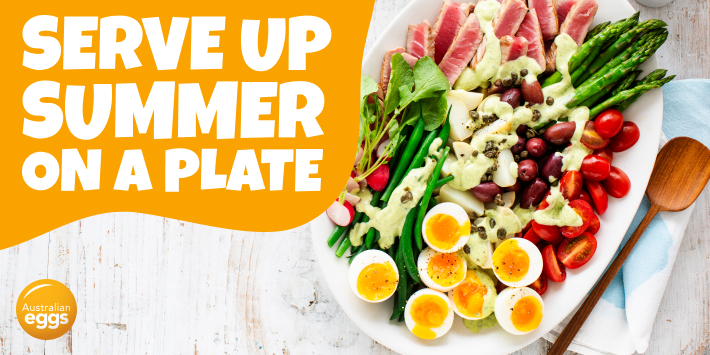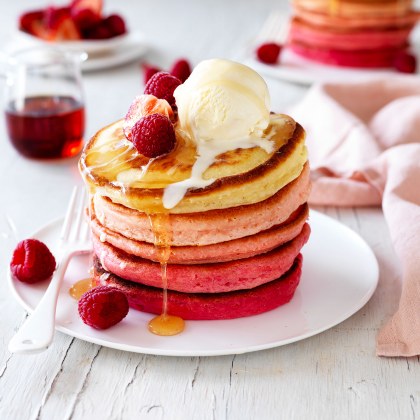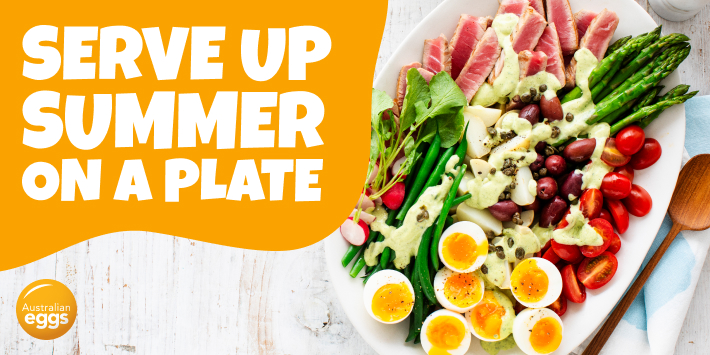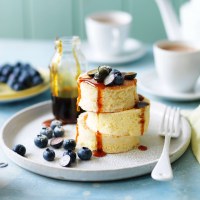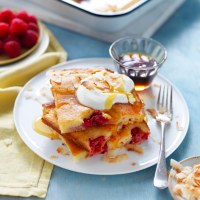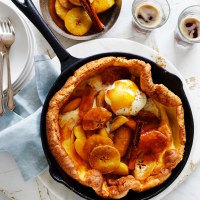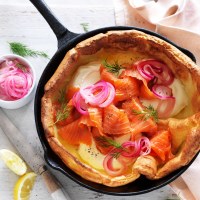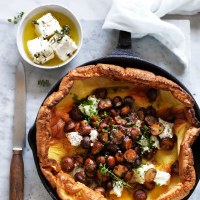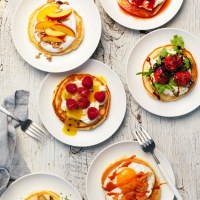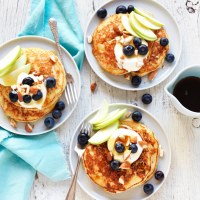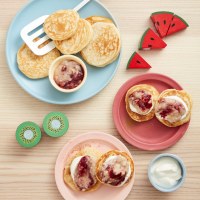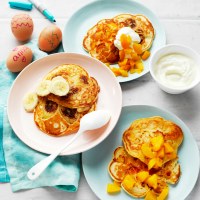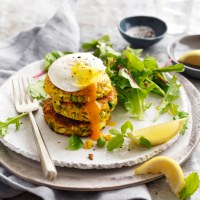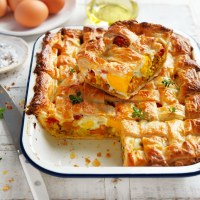The secret to fluffy pancakes
A fluffy pancake recipe is only as good as the technique you use to make it! With this easy pancake recipe and tips for making pancakes, you'll be able to make stacks and stacks of fluffy, light and tender pancakes in no time. Master this easy pancake recipe, as well as topping ideas and unique recipes below.
Watch how to make fluffy pancakes
Ingredients
- 1 ½ cups plain flour
- 1 tablespoon baking powder
- 1 tablespoon caster sugar
- 3 eggs
- 1 cup milk
- 50g unsalted butter, melted
- 1 teaspoon vanilla extract (optional)
- Maple syrup, to serve
- Blueberries, to serve
Method
- In a large bowl, whisk the flour baking powder, sugar and a pinch of salt together. In a large jug whisk eggs, milk, butter and vanilla, if using. Make a well in the centre of the dry ingredients and whisk in milk mixture to make a smooth batter.
- Heat a large, lightly greased non-stick frying pan over medium heat. Working in batches of 3, pour ¼ cups of batter into the pan. Cook pancakes for 1-2 minutes, until bubbles break on the surface and underside is golden brown. Flip over and cook for 1 minute.
- Stack and serve the pancakes with maple syrup and blueberries.
Get the recipe that you can save to your myfoodbook cookbooks here: The Best Pancakes
The secrets to the best pancake batter
Not too hot, not too cold
The temperature of your ingredients can change the way your batter turns out. You can use cold eggs and milk, but room temperature ingredients will make fluffier pancakes. It will also help the butter stay melted rather than clumping up into fat globules. Take milk and eggs out of the fridge 20 minutes before making your batter.
Make sure your butter isn't too hot to avoid scrambling the eggs. Melt the butter in the microwave in 30 second intervals and let cool slightly before adding to the egg and milk mixture.
Mix the right way
For the fluffiest pancakes, follow these steps to mix everything together the right way. Sift all the dry ingredients together with a fine sieve. This evenly mixes the ingredients and helps to incorporate air, which will make your pancakes even lighter.
TIP: Make sure your baking powder is not out of date, or your pancakes won’t rise as well.
Combine wet ingredients together in a separate jug – this step is more important than you might think. The less you mix the batter, the fluffier your pancakes will be. Mixing the dry and wet ingredients separately first means that once you combine the two you won't have to mix as much.
To mix the wet and dry ingredients together, pour the wet mixture into a well in the centre of your dry ingredients. Whisk or stir the wet ingredients in a circular motion, gradually catching the dry ingredients from the sides of the well. This way the ingredients are incorporated nice and evenly.
What consistency should pancake batter be?
Pancake batter should be a bit lumpy. It should be pourable, but not so runny that it doesn't keep its shape in the pan. If your pancake batter is too runny, you can add a bit more flour. If it's too thick, add milk a tablespoon at a time.
A smooth batter means you might have mixed the batter too much, and your pancakes may end up tough. Mix only until there are no streaks of dry flour.
Why is over mixing pancakes bad?
Over mixing develops the gluten in the flour, leading to tough and dense pancakes.
Give it a rest
Let the batter rest before cooking it, about 5-10 minutes is enough if you have mixed correctly. While it rests, the flour absorbs the liquids, the lumps will smooth out somewhat and the gluten has a chance to relax.
While the batter is resting it's the perfect time to prepare your toppings and preheat your frying pan.
What pan is best for cooking pancakes?
A non-stick frying pan is the easiest to use for cooking pancakes. Alternatively, a well-seasoned cast iron or stainless-steel pan are good options.
Use a medium heat to preheat your pan. This may take anywhere between 5-15 minutes, depending on the thickness of the base. The aim is to saturate the pan with heat for evenly browned and cooked pancakes.
What oil is best for cooking pancakes?
Use a neutral-tasting vegetable oil with a high smoke point to grease your pan, such as canola oil or peanut oil. Drizzle into pan and wipe off excess with paper towel. If you prefer butter, clarified butter is a good option as it won't burn.
How to tell when pancakes are cooked
Watch for these signs to tell when to flip your pancakes:
- Bubbles on the surface of the pancake - When they burst and stay hollow, it’s ready to be flipped.
- Golden colour of the base - once you can see a nice brown edge, check if the bottom of the pancake. Once it's browned through, it’s ready to flip.
For the best pancakes, keep adjusting the heat of your frying pan so that these things happen at the same time. Flip pancakes over and cook until the both sides are evenly brown.
How to keep pancakes warm
Pancakes are best served straight from the pan, but if you’re making a pancake stack there are a few ways to keep them warm.
Tea towel method
Line a plate with a large tea towel. Place pancakes on top, folding the tea towel tightly over them to keep warm and soft.
Slow cooker method
If cooking large amounts, preheat a slow cooker on low. Line with a tea towel and place cooked pancakes inside. Cover with lid between adding pancakes.
Oven method
Preheat oven to very low (100°C or lower). Line a large baking tray with baking paper and place cooked pancakes inside. Keep covered with foil as you add more pancakes.
More pancake recipes and topping ideas
These basic pancakes are a staple, but if you're after some more unique pancake ideas you might be interested in Fluffy Japanese Pancakes, Tray Bake Pancakes with Mango and Raspberries, or even Dutch Baby Pancakes! See all these recipes below and lots of interesting pancake topping ideas.

